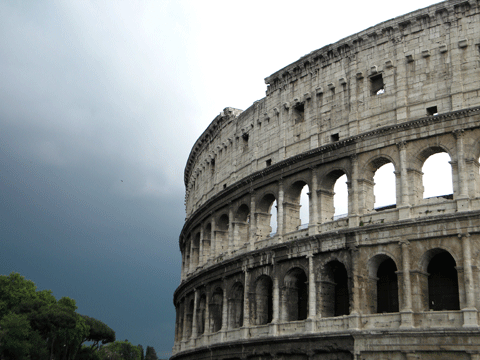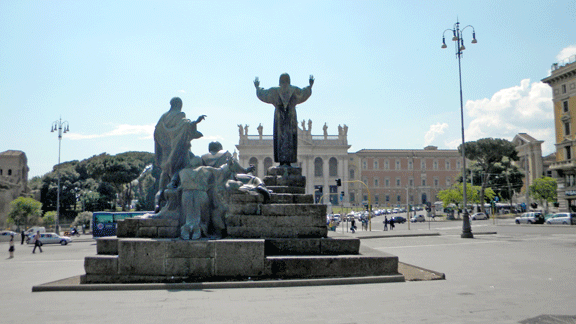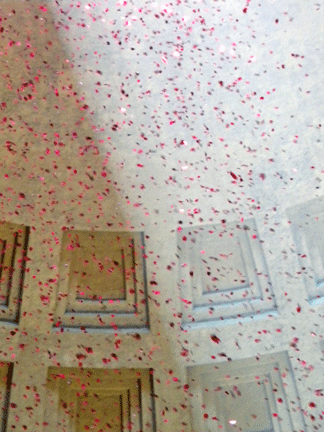
Theology students get first-hand look at historic Catholic sites in Rome
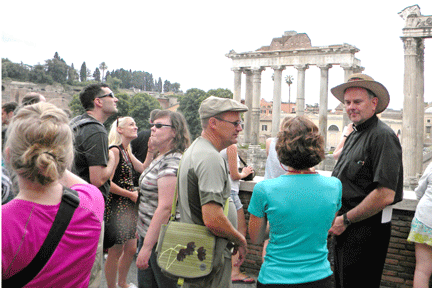
Director of the Graduate Program in Theology Father Joe Gile explains a point of interest to students during the trip to Rome.
In most classes, when a student learns about the history and famous sites of a city, the closest they actually get are the pictures in the textbook.
Students in the Newman University graduate theology program, however, have a unique opportunity to learn about the rich history of Rome and the deep roots of the Catholic Church embedded in the city – and then see first-hand the many places they’ve studied.
That opportunity comes in a graduate course called THEO 6713 – Christian Rome, an elective in the graduate program in theology that serves as a capstone experience for the two years of study in the program. Students who take the course learn about many historic sites in early and medieval Christianity, then travel to Rome to tour the city and see those sites for themselves.

Among the many activities during their eight days in Rome, students attended Mass on Pentecost Sunday at the Pantheon (Church S. Maria ad Martyres). At the conclusion of the Mass, thousands of rose petals are dropped from the oculus, or opening at the top of the dome, to signify the descent of the Holy Spirit upon the Virgin Mary and the Apostles
of Jesus as tongues of fire.
The first Rome trip was in Spring 2011. Last spring, Director of the Graduate Program in Theology Father Joe Gile led 18 graduate theology students and family members to see many sacred sites in the Eternal City. Student Beverly Pommier said her favorite part of the trip was being able to attend Mass at the Vatican.
“When you are blessed enough to be in the Vatican early in the morning before the crowds arrive, the peace and beauty of the sacred space is almost overwhelming,” she said.
Pommier also said she would recommend the class to other students for several reasons.
“Obviously, I had a great time and I learned so much about the early Church,” she said. “The trip also had a positive effect on my spiritual life. I came home instilled with a feeling of connection to the universal Church that I had never really experienced before. It’s wonderful to fall even more in love with the faith you have loved your whole life.”
.
.
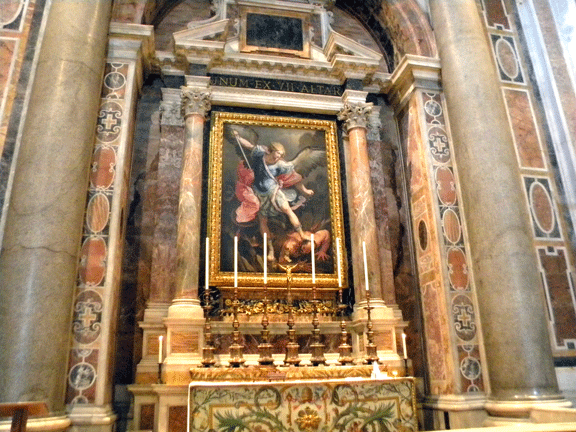 Other highlights for students were visits to the Sistine Chapel and the Vatican museum, and being presented to Pope Benedict XVI at the General Papal Audience at the Vatican. The trip also included day trips to Assisi and Orvieto. During the 2011 trip, the group also visited the ASC Generalate in Rome and the tomb of St. Maria de Mattias.
Other highlights for students were visits to the Sistine Chapel and the Vatican museum, and being presented to Pope Benedict XVI at the General Papal Audience at the Vatican. The trip also included day trips to Assisi and Orvieto. During the 2011 trip, the group also visited the ASC Generalate in Rome and the tomb of St. Maria de Mattias.
Gile said his favorite part of the Rome trip is the Scavi tour. Scavi is Italian for “excavation,” Gile explained, and the tour takes participants underneath St. Peter’s Basilica. When architects were making room for the Basilica, they pushed dirt into a pile and then built the church on it. In doing so they preserved a 1st Century city complete with a cemetery.
The Scavi tour ends at the tomb of St. Peter – a spot Gile loves to show people.
“If it’s their first time there, I want to be standing right next to them when they turn the corner to see the expression on their face,” he said.
Gile added that this class is unique because, “Nothing changes or broadens you more than travel. It has a power that cannot be duplicated. This course gives students the opportunity to broaden not only their knowledge, but also their character.”
